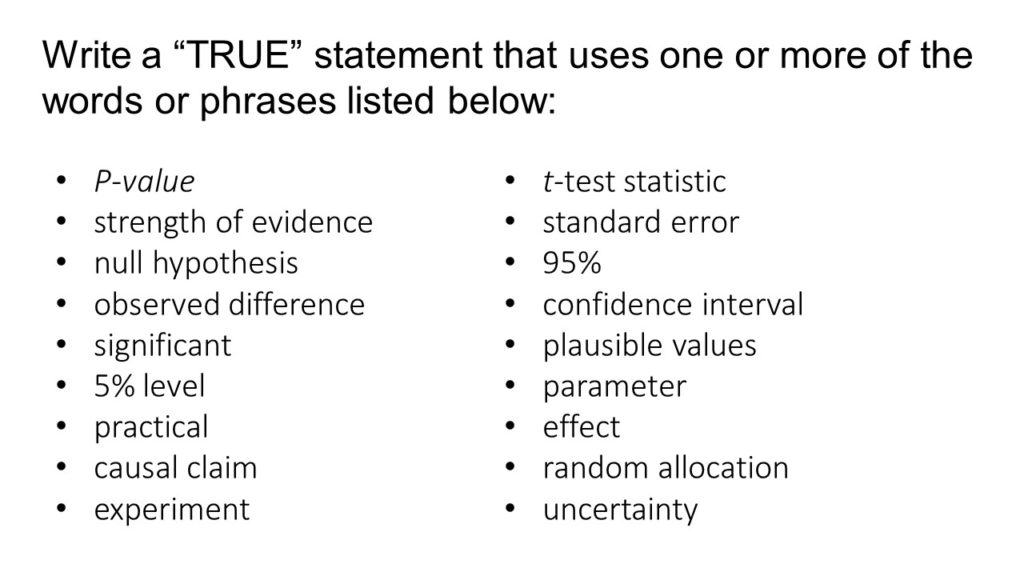
We use multiple choice questions (MCQs) for a large proportion of the assessment conducted in our intro stats course. Our approach is to try to frame the questions in terms of “Which statement is false?” rather than which statement is true, so that students are mostly reading about true things.
MCQs can also be used in large lectures, via personal response systems (PRS) like Qwizdom, to check student understanding. However, because the options for a MCQ are carefully written to be unambiguous and precise – so there definitely is only one false option – students can end up reading statements that are verbose and intimidating. I feel students often don’t get enough validation that they do actually “know things” when they are selecting options rather than articulating understanding in their own words.
I’m always looking for ways to encourage students to write, and for ways to give immediate feedback on writing when working with a large group of students. To help students tackle reading MCQs and share their understanding in their own words, I tried an activity over summer school where I gave students a list of key words related to a topic, and then asked them to use at least one word on the list to write a statement that was true. I did try to group some words together that could be used to write true statements, and thought that the prompt “one or more” was a nice way to provide a low level entry point (Just one word!) as well as a challenge (How many could you use in one statement?)
Below is an example – see if you can work out what the topic was!

I collected statements from students in the lecture via one of my apps, took a random sample of the statements, and displayed them one-by-one on the screen for us to discuss. Even though I can’t give specific feedback on all the statements during the lecture, talking about a few of them is manageable and the students seem to appreciate it (almost as much as seeing their own drawings of cats!).
Some of the statements submitted by my students for this particular activity are below:
- A 95% confidence interval is a range of plausible values for the parameter.
- An experiment involves random allocation to the treatment groups.
- The P-value measures the strength of evidence against the null hypothesis.
- The parameter is the thing that we don’t know about a population.
- If P-value is less than 5%, we have evidence against the null hypothesis that the observed difference (for the two groups) are not the same. We can say that the observed result has statistical significance.
- The observed difference has statistical significance at 5%.
Not all of these statements are “correct” – many are partially true but need more details or re-wording. This is of course how we can end up with such verbose and intimidating options for MCQs! But I find that using student-generated statements as a starting point, and then explaining why more words are needed to make a true statement is a valuable learning experience.
Using writing-based activities in large lectures is definitely an area I want to explore more! Although compared to my drawing-based activities, the rates of participation are much lower for my writing-based activities, I think it’s an important aspect of their learning that should be more visible in lectures. While I could use methods to analyse the text from all the statements submitted (like Emma’s approach), I also think there is value to students seeing a variety of writing attempts from a small random sample and learning from these statements.
Anna is a Lecturer in the Department of Statistics, University of Auckland.